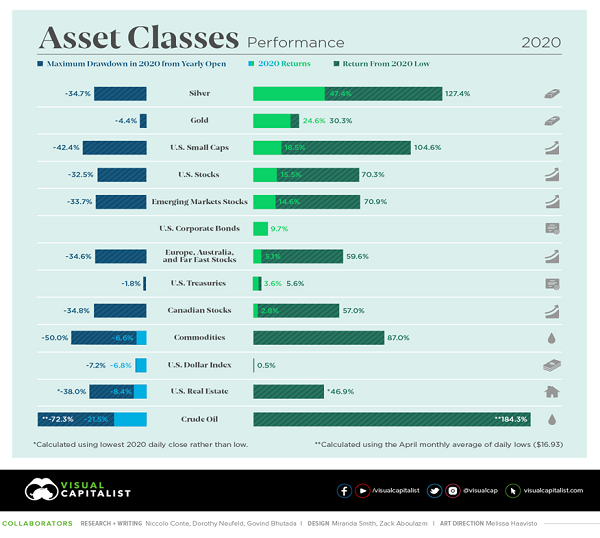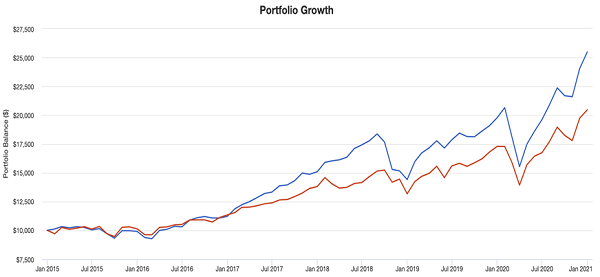If you’re like most investors, you’re tired of having the following two pieces of “wisdom” pounded into your head by the financial media:
- Any high yield (here I’m talking 6% and up) is dangerous and certain to be cut, and …
- Hardly anyone ever outperforms the S&P 500, so why even try?
Both are nonsense.
Fact is, you can get steady yields of 7% and higher (or even 8.8%, as I’ll show you shortly) through several high-yield funds called closed-end funds (CEFs). (If you’re a member of my CEF Insider service, you already know this: our portfolio of 20 CEFs is handing us an average dividend of 7.7% today, with the highest yielder of the bunch paying an outsized 11%.)
Why Index Funds Are a Bad Deal for Investors
Before we get to CEFs, let’s start with that second point above: that we as individuals (or the manager of any actively managed fund, for that matter) have little hope of beating the S&P 500.
It’s a piece of “wisdom” that’s very wrong, as 2020 demonstrated in spades.
This is surprising, since 2020 was a good year for the index itself, especially in light of the pandemic. US stocks went up 15.5%, beating pretty well all other investments except silver and gold, which got a bump from inflation concerns (but it should be noted that both metals are still trailing the index over a longer time horizon).
Stocks in the Lead

With American stocks doing so well, plenty of folks will simply throw their money into a low-cost index fund like the Vanguard S&P 500 ETF (VOO) or the Vanguard Total Stock Market Mutual Fund (VTSAX). Part of the lure is these funds’ low fees (0.04% of assets and 0.03%, respectively, which, let’s be honest, is practically nothing).
The first reason why we CEF investors take a different course is cash flow; these two popular funds pay out a measly 1.3% average dividend yield, so for every $100,000 you put in, you’re getting just $108 per month in dividends. With food prices soaring to a six-year high, that’s not enough dividend income to even cover your grocery bill—and you’d need to save millions just to get a poverty-level income stream without having to sell down your portfolio (and risk being forced to do so during a crash).
To get an income stream of $2,338 per month, you’d need to put about $2.2 million in VOO or VTSAX to get dividends a touch above poverty wages. (I chose that as an example because it is 10% above the poverty-line income for a household of four—and even for just one retired couple, it’s not going to be enough.)
But if you can get an 8% dividend yield, suddenly that $2.2 million would get you $14,666 in monthly income—quite a long way away from poverty! Even a $500K investment would get you $40,000 a year, or $3,333 monthly, which would be enough for many people to retire on just with dividends alone.
And there are many 8%-yielding options out there. Trouble is, many of them trail the S&P 500 by a wide margin. But it is possible to get the best of both worlds and construct a portfolio that both pays a big yield and outperforms the S&P 500—which brings me back around to CEFs, and four specific funds that bring you diversification, big profits and an 8.8% dividend.
A 4-Fund CEF Portfolio for 8.8% Dividends and Market Outperformance
Our “instant” CEF portfolio consists of the BlackRock Science and Technology Trust (BST), Franklin Limited Duration Income Trust (FTF), Liberty All-Star Growth Fund (ASG) and PIMCO Corporate & Income Opportunities Fund (PTY).
Since these are all CEFs, they are focused on maximizing payouts to shareholders as much as possible while also trying to grow the fund’s net asset value (NAV, or the value of the CEF’s underlying portfolio).
Many CEFs do this successfully, and these four funds have been doing it while paying an average yield of 8.8% for years. At that level, a $2.2-million investment is suddenly doling out over $16,000 per month. And at $500K, you’re getting a tidy $3,666 monthly.
And these funds get us some nice diversification across assets, too—something you simply can’t get by investing in an S&P 500-tracking index fund.
BST, for example, focuses on US and international tech stocks, with significant holdings in heavyweights like Apple (AAPL), Amazon.com (AMZN) and PayPal Holdings (PYPL). ASG holds both large and mid-cap stocks, such as Visa (V) and property manager FirstService (FSV), while PTY and FTF give our portfolio some corporate-bond exposure.
$2.2 Million Goes From Producing Poverty-Level Income to a Massive Cash Stream

Source: CEF Insider
The best part, however, is how this four-CEF portfolio not only crushes the index but has a long history of doing so.
A Wealth Generator

Source: CEF Insider
In this chart, the red line represents the S&P 500, and the blue line represents this portfolio with an equal allocation to each of these four funds. In just five years, this portfolio has more than doubled in value, with dividends included, so every $10,000 invested has become $25,487. With an index fund like VTSAX or VOO, you would have gotten just $20,461.
Sure, these funds do boast considerably higher fees than VOO and VTSAX, but the numbers I’ve just shown you include fees. I think you’ll agree that with outperformance like that, higher fees are well worth paying.
It just goes to show you that when investors obsess over fees, they often cut off their nose to spite their face. In the scenario above, investors who obsessed over fees ended up poorer than those who saw the power of high-yielding CEFs. And while they saw their portfolios grow, they had access to a dividend stream that was over five times bigger, getting them flexibility, too.
Introducing the Ultimate CEF Buys for 2021: Massive Yields and 20%+ Upside Ahead
The only snag with these 4 funds is that the market has caught on to their high-quality portfolios and big dividends, which means they either trade at tiny discounts or premiums to their net asset value (NAV) today.
So put them on your watch list for now—and then go out and buy the 4 other CEFs I have for you today.
These 4 off-the-radar picks pay pretty much the same dividend—an 8.7% yield as I write this—but they’re all trading at ridiculous discounts now. The bottom line here is that my proven CEF-picking system has them flagged for 20%+ price upside in 2021, in addition to their massive 8.7% average payout.
These 4 funds are the ultimate income-and-growth plays for 2021, and I urge you to buy them now. Get all the details you need right here, including the names, tickers and upside potential and complete dividend histories of all 4 of these unique funds.

Recent Comments